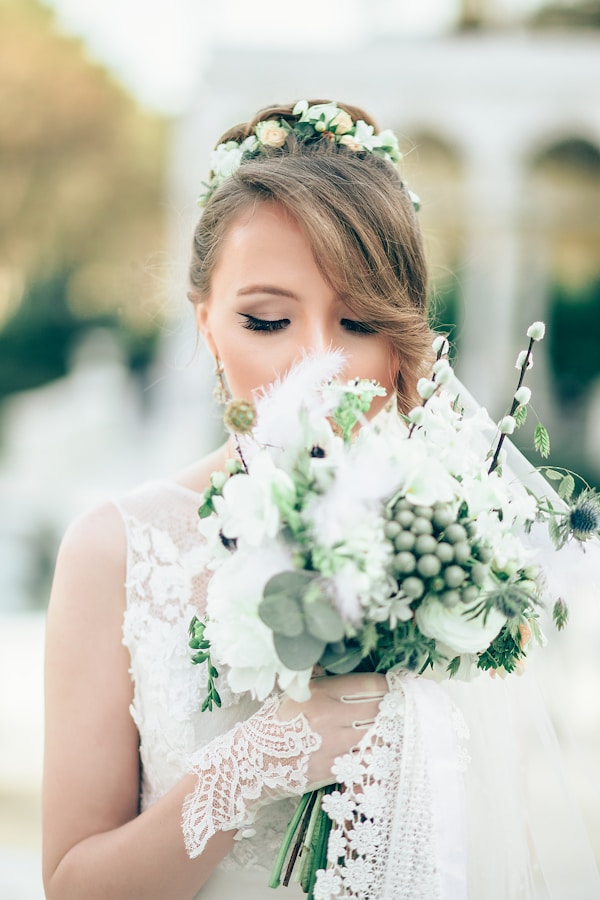Unveiling the Artistry: Exploring Methods for Creating a Wedding Dress with a Layered Tulle Skirt
Unveiling the Artistry: Exploring Methods for Creating a Wedding Dress with a Layered Tulle Skirt
Introduction
When it comes to wedding planning, choosing the perfect wedding dress is undoubtedly one of the most exciting yet daunting tasks. Among various styles, the wedding dress with a layered tulle skirt stands out, offering a whimsical and ethereal look that many brides dream of. But what methods are used to create such breathtaking gowns? In this article, we will explore the various techniques artists and designers use to bring these enchanting dresses to life, focusing on the art of layering tulle and the craftsmanship behind each gown.
Understanding Tulle and Its Characteristics
Tulle is a lightweight, sheer fabric that is often used in the fashion industry to create delicate designs. Its fine netting structure allows for a soft drape, making it an ideal choice for skirts, veils, and other bridal accessories. The use of tulle in Wedding dresses has been a timeless tradition, adding volume and an airy aesthetic.
Types of Tulle
| Type of Tulle | Description |
| Silk Tulle | A luxurious option with a soft touch and elegant sheen. |
| Nylon Tulle | More affordable and durable, ideal for volume and structure. |
| Organza Tulle | Stiffer than other types, it holds shape beautifully and adds drama. |
| Polyester Tulle | Cost-effective and widely available, suitable for various styles. |
Methods for Creating a Layered Tulle Skirt
Designing a wedding dress with a layered tulle skirt involves several methods, each contributing to the overall beauty and style of the gown. Here, we delve into some of the most popular techniques employed by designers:
1. Draping
Draping involves arranging fabric on a dress form to create the desired shape and silhouette. Designers use this method to visualize how the layers of tulle will fall and interact with each other. By manipulating the tulle fabric, they can achieve a cascading effect that adds depth and movement to the skirt.
2. Layering Techniques
Layering is key to creating a voluminous tulle skirt. Different techniques can be employed:
- Even Layers: This technique involves stacking layers of tulle evenly, providing a full, balanced appearance.
- Asymmetrical Layers: This method creates dynamic movement through shorter layers in the front and longer ones in the back, enhancing the gown’s ethereal quality.
- Gathering: Ruffling or gathering the tulle at various points gives the skirt texture and dimension.
3. Patterns and Structure
Designers often incorporate patterns into the tulle layering to add visual interest. This can include floral embroideries, lace trims, or even beads that embellish the fabric. Additionally, a well-structured underskirt is critical for providing support to the layered tulle, ensuring it maintains its shape.
4. Use of Crinoline
Crinoline is a stiff fabric that is often used in wedding dress skirts to create volume. Placed beneath the tulle layers, crinoline gives the skirt a fuller silhouette, allowing the tulle to float gracefully. This layering not only enhances the shape of the gown but also adds an element of drama.
The Importance of Customization
Every bride has a unique vision for her wedding dress, which is why customization plays a vital role in the design process. From selecting the color of the tulle to adjusting the length of the skirt, customization ensures the gown reflects the bride's personal style. Many designers offer bespoke services, enabling brides to collaborate closely in crafting their dream attire.

Common Questions and Considerations
When embarking on the journey to create a wedding dress with a layered tulle skirt, many brides may have questions, such as:
- How many layers of tulle should I choose? - The number of layers can vary based on personal preference and the desired silhouette. Generally, three to five layers are common for a voluminous look.
- Is tulle comfortable to wear? - Tulle can be comfortable, but it’s important to consider the weight and type of tulle. Lighter tulle fabrics are often more breathable than heavier ones.
- What is the best way to maintain a layered tulle skirt? - Proper care includes gentle washing, allowing it to air dry, and proper storage to maintain shape and prevent wrinkles.
Conclusion
A wedding dress with a layered tulle skirt represents a beautiful balance between art and craftsmanship. Utilizing methods such as draping, strategic layering, and customization, designers create breathtaking gowns that can cater to every bride's dream. As you embark on your journey to finding or creating the perfect wedding dress, consider these techniques and insights to help guide your choices. Whether you opt for a simple design or an elaborate ensemble, a layered tulle skirt can add romance and elegance to your special day.
Remember, your wedding dress is not just attire; it’s a representation of your personal journey towards that magical moment. Take the time to collaborate with a skilled designer, and don’t hesitate to express your vision – after all, it’s your day to shine!
